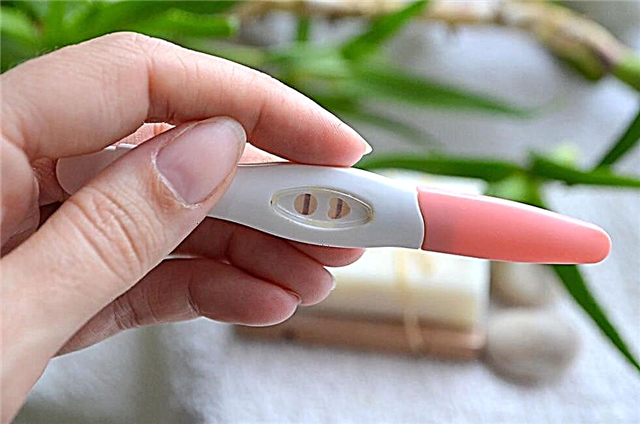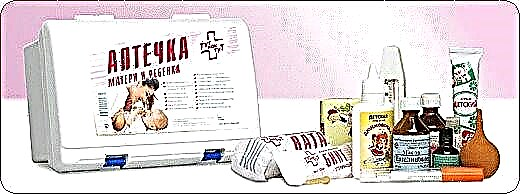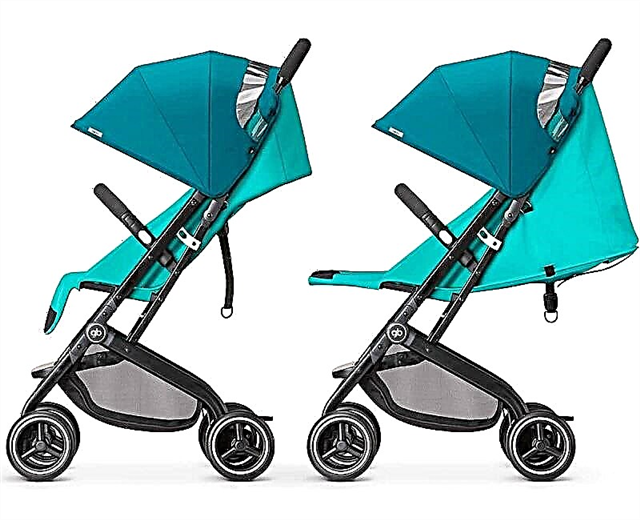It is especially difficult for infants to tolerate a runny nose, since difficulty breathing through the nose is one of the signs of the disease, does not allow the child to eat and sleep peacefully. Frequent episodes of rhinitis and its chronic course in infants are often complicated by otitis media, and in older children - by sinusitis.
3 main causes of rhinitis in children
The causes of rhinitis in children are quite numerous. Infant rhinitis can be a sign of an infection, such as the flu, or it can be an independent disease.
Among the many causes of rhinitis, there are 3 most common:
- Viruses,
- Bacteria
- Allergy.

Viruses are by far the dominant cause of acute rhinitis. Among them, rhinitis is most often caused by influenza viruses, adenoviruses, rhinoviruses, enteroviruses.
The causative agent of bacterial rhinitis is mainly the coccal microflora. The cause of the disease can be: streptococci, staphylococci, meningococci. These are the most common culprits for bacterial rhinitis.
Allergies are the main cause of chronic rhinitis in children today. Anything can be an allergen that has become an etiological factor, but most often it is something that a child can inhale with the air: dust particles, pollen, wool and other animal secretions.
Often, rhinitis in children, mainly at a young age, develops after foreign objects enter the nose. While playing, kids can shove any small object into the nose of themselves or a peer, which, being in the nasal cavity for a long time, can cause rhinitis.
Also, rhinitis can be caused by intracellular parasites (chlamydia, mycoplasma), fungi, deviated nasal septum, adenoids.
Despite numerous reasons, the protective properties of the nasal mucosa play a significant role in its development, in violation of which the risk of developing rhinitis increases.
Factors that reduce the protective properties of the mucous membrane:
- Hypothermia, as well as sharp temperature fluctuations;
- Air contaminated with chemicals or dust;
- Air is too dry;
- Irritating, strong odors;
- Long-term used vasoconstrictor drops.
Types of rhinitis in children
According to the course and changes in the mucous membrane, rhinitis is usually divided into acute and chronic.
Chronic rhinitis is subdivided into the following forms:
- Simple catarrhal.
- Hypertrophic. This form is divided into vascular, fibrous, edematous, polyposis and mixed. And in terms of prevalence, it is limited and diffuse.
- Atrophic, which is divided into simple and fetid (ozena).
- Allergic.
- Vasomotor.
How does acute rhinitis manifest in children?
The disease always affects both halves of the nose. The development of acute rhinitis is accompanied by malaise, sneezing, impaired sense of smell, nasal sound. Edema of the mucous membrane makes it difficult to breathe through the nose, congestion appears, headaches, lacrimation occur and hearing decreases. Mucus flowing down the back of the pharynx provokes an obsessive cough.
There are three stages of development of inflammation of the mucous membrane in acute rhinitis:
- Irritation.
This stage is manifested by dryness and itching. The child has itching in the nose. These are the first signs of rhinitis. Then congestion appears. The first stage lasts from several hours to a day.
- Stage of serous (watery) discharge.
The mucous membrane of a healthy nose constantly secretes small amounts of mucus. Its layer is replaced every 10 - 20 minutes, removing dust particles that have entered the nose. With inflammation, the secretion of mucus increases many times over, which is manifested by rhinorrhea, literally flows from the nose. Leaking mucus and constant rubbing of the nose is irritating and it looks red and swollen. In addition to the flow from the nose, severe edema of the mucous membrane develops and nasal breathing is sharply disturbed. The child often sneezes, his snot and tears flow, and his nose does not breathe at all. As a result, appetite decreases and sleep is disturbed. This stage lasts 1 - 2 days. Abundant liquid discharge quickly thickens and the third stage of rhinitis begins.
- The stage of mucopurulent discharge.
At this stage, the flow from the nose stops, thick, yellowish discharge appears - with viral inflammation and purulent - with bacterial. The nose begins to breathe and smells again, nasal breathing is slowly restored and the state of health improves.
On average, all three stages of rhinitis, with an uncomplicated course, pass in seven days, and in a week the child recovers.

Features of acute rhinitis in infants
For infants, acute rhinitis is a serious illness, often accompanied by the development of complications. Moreover, the younger the child is, the more severe the course of rhinitis. This is due to the peculiarities of the structure of the nose in babies. Infants have well-developed turbinates, and the nasal cavity has a small volume, so their nasal passages are narrow and even a slight swelling of the mucous membrane can lead to difficulty or inability to breathe through the nose.
The main symptom of difficulty in nasal breathing is frequent interruptions in sucking and breathing through the mouth. The inability to breathe through the nose forces the baby to interrupt sucking or he completely refuses to take the breast or bottle. He is forced to breathe through his mouth, and the baby's mouth is constantly open. The child remains hungry, so he becomes restless, sleeps poorly, and loses weight. When breathing through the mouth, the baby swallows air and flatulence (gas) occurs, anxiety increases, vomiting and loose stools may appear, the baby's general condition worsens.

In the case when the nasal passages are greatly narrowed, in order to facilitate breathing, the baby throws his head back, which causes tension in the large fontanelle and cramps may appear.
In infants, inflammation is not limited to the nasal cavity and spreads to the throat, so acute rhinitis is usually accompanied by pharyngitis.
The special structure of the choanas (holes in the nose connecting the nasal cavity with the pharynx) does not allow mucus to descend into the nasopharynx. It accumulates in the nasal cavity, in its posterior parts. This phenomenon is called posterior rhinitis, which occurs in infants. In this case, the mucus in strips flows down the back wall of the pharynx, which is clearly visible upon examination.
Frequent complications of rhinitis in infants are: otitis media, tracheobronchitis, dacryocystitis.
In older children, the course of acute rhinitis does not differ from that of adults.
Acute rhinitis as a symptom of an infectious disease has its own characteristics characteristic of this type of infection.
The course and signs of chronic rhinitis in a child
Chronic rhinitis leads to permanent changes in the mucous membrane. Prolonged rhinitis causes hypertrophy (overgrowth) or atrophy (thinning, shrinkage) of the nasal mucosa.

Simple catarrhal form very similar to acute rhinitis, but more sluggish with less pronounced symptoms. The child is worried about the incessant mucous discharge and alternating congestion of one or the other half of the nose. When the child lies down, the congestion increases, so babies often sleep with their mouths open. The resulting dry throat, together with the flow of mucus into the nasopharynx, provokes a dry, obsessive cough. This form of rhinitis is characterized by an improvement in the condition in spring and summer, when it is warm. At this time, the manifestations of rhinitis subside and the child feels well, but in the fall, with the first cold weather, everything repeats, and the symptoms of the disease intensify.
Hypertrophic form characterized by a sharp obstruction of nasal breathing. The child's nose is constantly not breathing, because of this, the head hurts, sleep is disturbed. The child does not distinguish well or does not feel at all smells, speaks in the nose (nasal), his hearing decreases, he becomes absent-minded, quickly gets tired. The result is school failure.
Vasomotor formusually debuts at the age of 6-7 years. In newborns, infants and young children, this form of rhinitis is very rare.
The main signs of this form are periods of impaired breathing through the nose, accompanied by profuse discharge and constant sneezing. During this period, there is redness of the mucous membrane of the eyes (conjunctiva) and face, lacrimation, sweating, as well as burning, numbness, tingling and a feeling of creeping on the skin, called a general term - paresthesia. There is a clear relationship between rhinitis attacks with nervous tension and stimuli, for example, control, a scandal in the family or a sharp cold snap.
Allergic form can occur in a child of absolutely any age and is rarely isolated. As a rule, it is combined with allergic dermatitis, bronchial asthma and other manifestations of allergies.
With an allergic form, a child is worried about severe itching in the nose, sneezing attacks, swelling and redness of the face, it runs from the nose, and the eyes are watery.

Atrophic form rhinitis in childhood is rare. A fetid rhinitis or ozena, one of the varieties of the atrophic form, occurs in adolescents, and in girls it is 2 to 3 times more common.
Ozena is manifested by thinning and dryness of the mucous membrane, which is covered with crusts of dried, thick, purulent discharge. Because of these crusts, patients emit a very unpleasant, repulsive smell to others, which patients do not feel, they have no sense of smell. Peers avoid communication with the patient, and he feels extremely depressed. If the atrophy invades the bones of the nose, deformity (curvature) develops, and the nose resembles a duck's beak in shape.
How is the diagnosis made?
After interviewing the parents and the child, identifying complaints, the pediatrician examines the nasal cavity and pharynx (rhinoscopy and pharyngoscopy). Then, based on the data obtained, he makes a diagnosis. The pediatrician, as a rule, makes a diagnosis of acute rhinitis, and in the presence of complications or suspected chronic rhinitis, the child is referred to an otorhinolaryngologist for consultation. Children with allergic rhinitis consult an allergist-immunologist.
If necessary, laboratory (nasal smear culture) and instrumental (X-ray) research methods can be prescribed to clarify the diagnosis.
Principles of rhinitis treatment in children
- Children who have a runny nose for more than a week, and infants from the first day of the disease, must be examined by a pediatrician. Treatment of rhinitis in children, especially acute, in most cases, is carried out by a pediatrician, who, if necessary, connects doctors of other specialties.
- Injecting drugs into the nose in the form of drops, ointments and a spray to infants can only be prescribed by a doctor.
- Before the introduction of any drug, it is necessary to clear the nasal cavity from mucus and crusts. For infants, drip a few drops of saline solution (Saline, saline), and then suck off the mucus with a rubber can or a special aspirator. You can remove mucus and crusts with a flagellum twisted from cotton wool, introducing it into the nasal cavity with rotational movements (use a separate flagellum for each nostril).

For older children, rinse their nose with saline, if the child knows how, you can simply blow your nose.
- Complex treatment is prescribed according to indications when rhinitis is a sign of any infection and depends on its type.
- Children with acute rhinitis are prescribed mainly symptomatic treatment aimed at restoring nasal breathing. For this purpose, vasoconstrictor, antiseptic and antiviral drugs are prescribed.
Vasoconstrictor drugs should not be used for more than 5 days because prolonged use violates the nasal mucosa, leaving irreversible changes in it. Children can only use drugs that are intended for childhood. The concentration of active ingredients in them is much lower, and the effect is milder, especially for the delicate and thin mucous membrane of children's noses.
The use of reflex (distracting) therapy gives a positive effect. These are hot foot baths, dry mustard powder in a sock. The use of reflex therapy is contraindicated if there is an increase in temperature.
From physiotherapeutic methods, children are prescribed KUF and UHF.
- In the treatment of chronic rhinitis, identification and elimination of the cause of rhinitis is of primary importance.
The treatment tactics of chronic forms of rhinitis is determined by the ENT doctor, and allergic rhinitis in children is treated by an allergist-immunologist.
Prevention of all rhinitis consists in the timely treatment of diseases of the nose, as well as the nasopharynx; systematic hardening; elimination of the effects of factors that reduce the protective properties of the nasal mucosa; the use of fortifying and protective agents during the period of increased morbidity.



